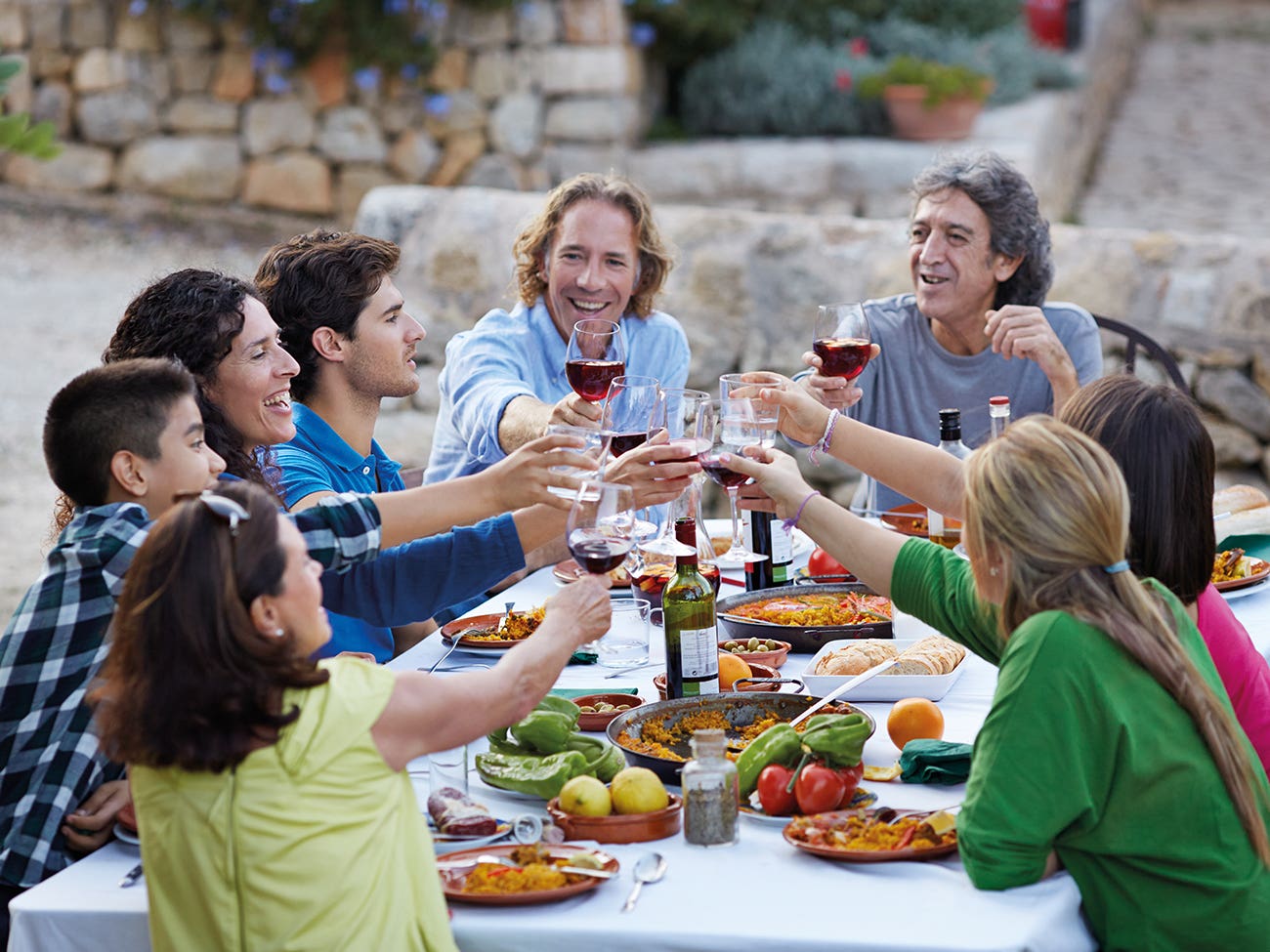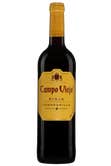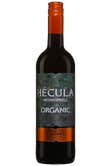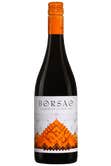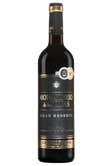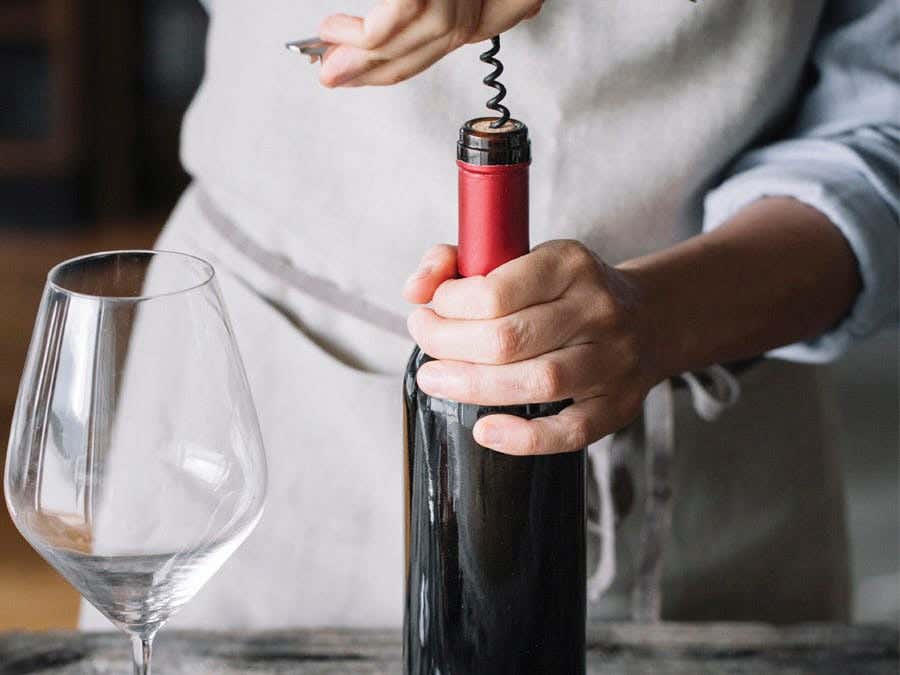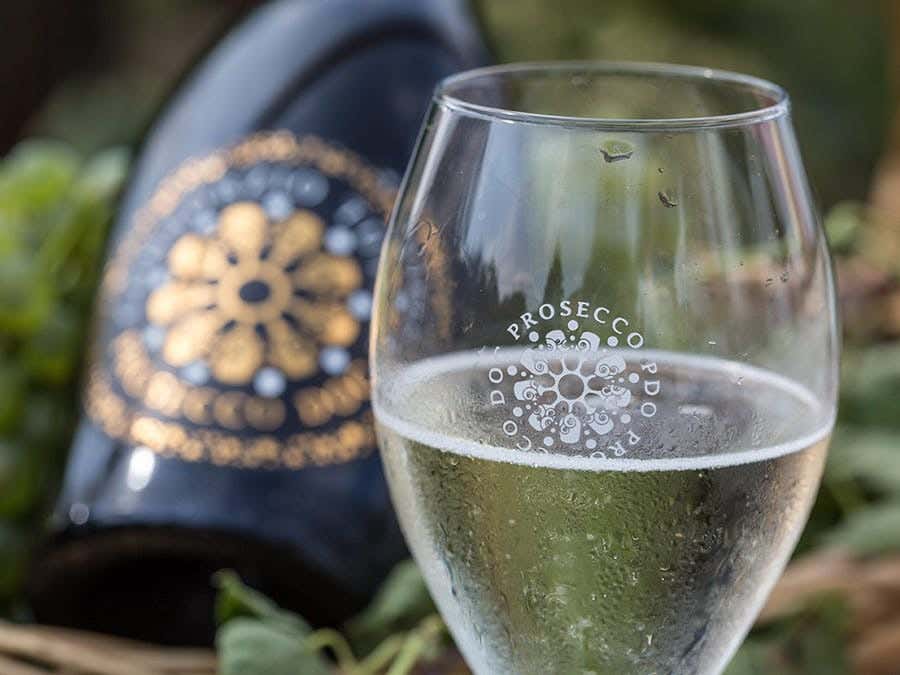So what is a Spanish wine like?
These days, it’s a striking blend of old and new, undeviatingly traditional and spontaneously creative. It’s the singular and ancestral flavour of sherry, the effervescence of a casual cava with all forms of pork and tapas, deep and woody, perfect for fall game, offbeat natural wines that are breathing new life into once-forgotten varietals. It’s also the briskness of an Albariño, the fruitiness and minerality of a Bierzo red, the structure of a high-flying Bordeaux blend, a glass of Vermouth on ice for an aperitif or the electrifying tannins of a volcanic wine from the Canary Islands.
Tradition and innovation: the Rioja way
“Currently, a wide variety of styles are trending,” explains José Peñín, author of Guía Peñín, an annual guide and the authority on the Spanish wine world since its inception 25 years ago. “With all this diversity, though, we’re still observing a surge in organic and sustainable methods, as well as a desire to bring back flavours from the past, all the while having recourse to more advanced wine-making practices.”
Estates that still mature wine in American oak, as has been done for over 100 years now, rub shoulders with more innovative Pagos, estates that seek to leave their own mark on terroirs that, until recently, have often been left untapped. And everyone seems to be doing well. Is Spain not the global gold medalist of exports with its billions of bottles sold worldwide every year?
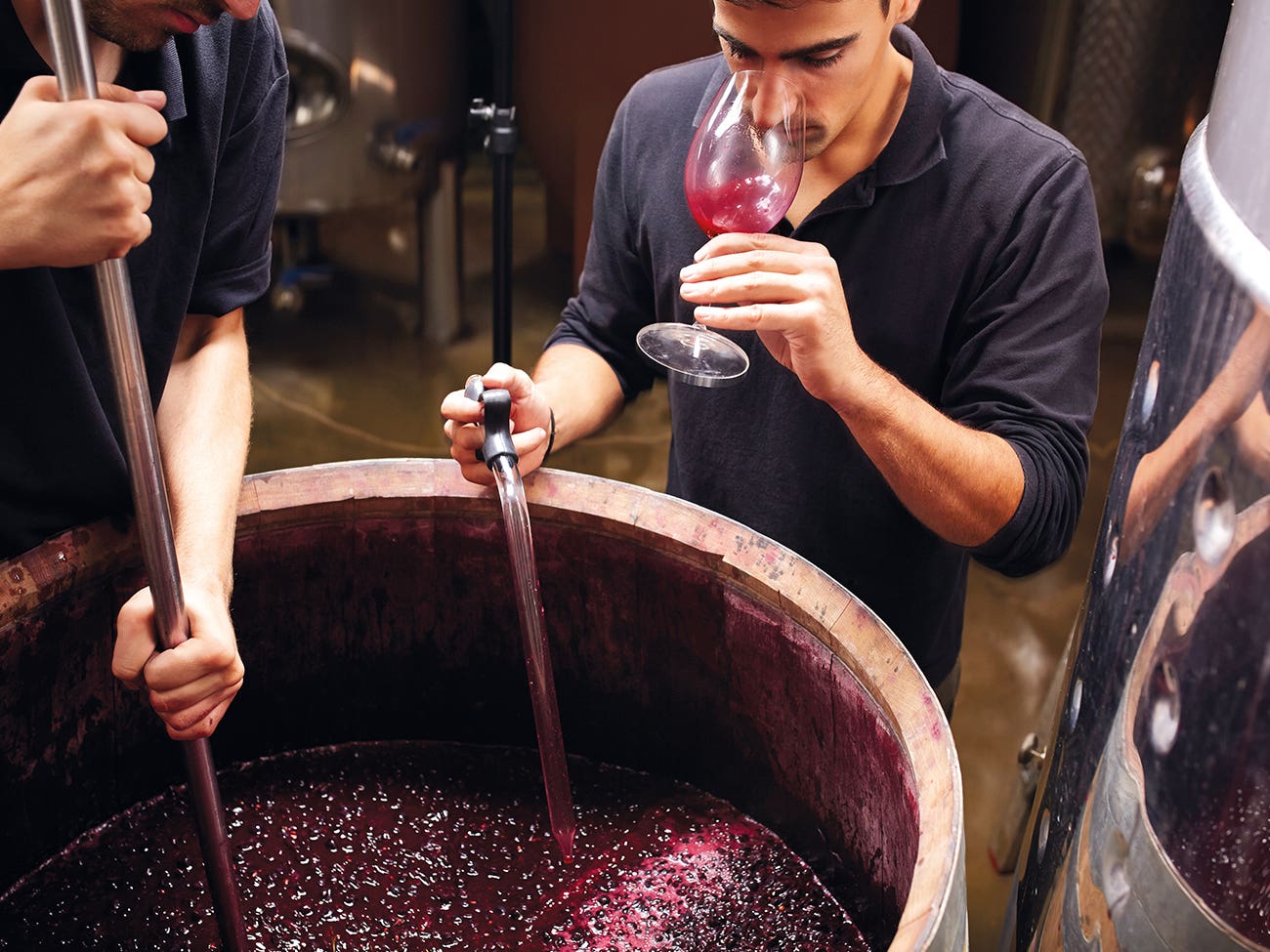

The example par excellence for our prominent Spanish columnist is the Rioja. “Rioja can hold the tension for a minority that’s still attached to lengthy aging in barrels, and the desire of a majority of winemakers that want to make room for more varied and modern approaches. With significant investment in promotion and marketing, Spain’s Rioja region is certainly the country’s most famous with major worldwide recognition.”
The Spanish advantage
Beyond diversity, José Peñín also highlights one of Spain’s biggest competitive advantages, one that’s true across levels and regions: the price point. “As a whole, Spanish wine and even premium products boast excellent value for your dollar. The fact that even the most quality-centred winemakers offer great prices invites others to follow suit.”
Critics say that a focus on cost comes with its own pitfalls. A large portion of the Spanish market, notably exports, falls under the bulk category, which sells at prices so low that other wine producers, like regional co-ops, find it difficult to have the means to grow and modernize.
All the same, and this goes for all of Spain’s terroirs, producers don’t simply stand on the sidelines waiting for change. They align themselves with big world trends while still highlighting the unique quality – or qualities, rather – of their soils, climates and varietals. José Peñín expands on the idea, telling us that, “the focus on terroir, the trend to make wine from local varietals, using eco-friendly and natural methods, has been powered by the latest wave of sommeliers, bloggers, columnists and shop owners. Yet, though well-heeled regions and bigger producers are not an exception to the rule, smaller regions are at an advantage when it comes to the emergence of smaller winemakers, who themselves aren’t in direct competition with the upper echelons.” There are nearly one million hectares of vineyards covering the whole of Spain – there’s kind of room for everybody, wouldn’t you say?
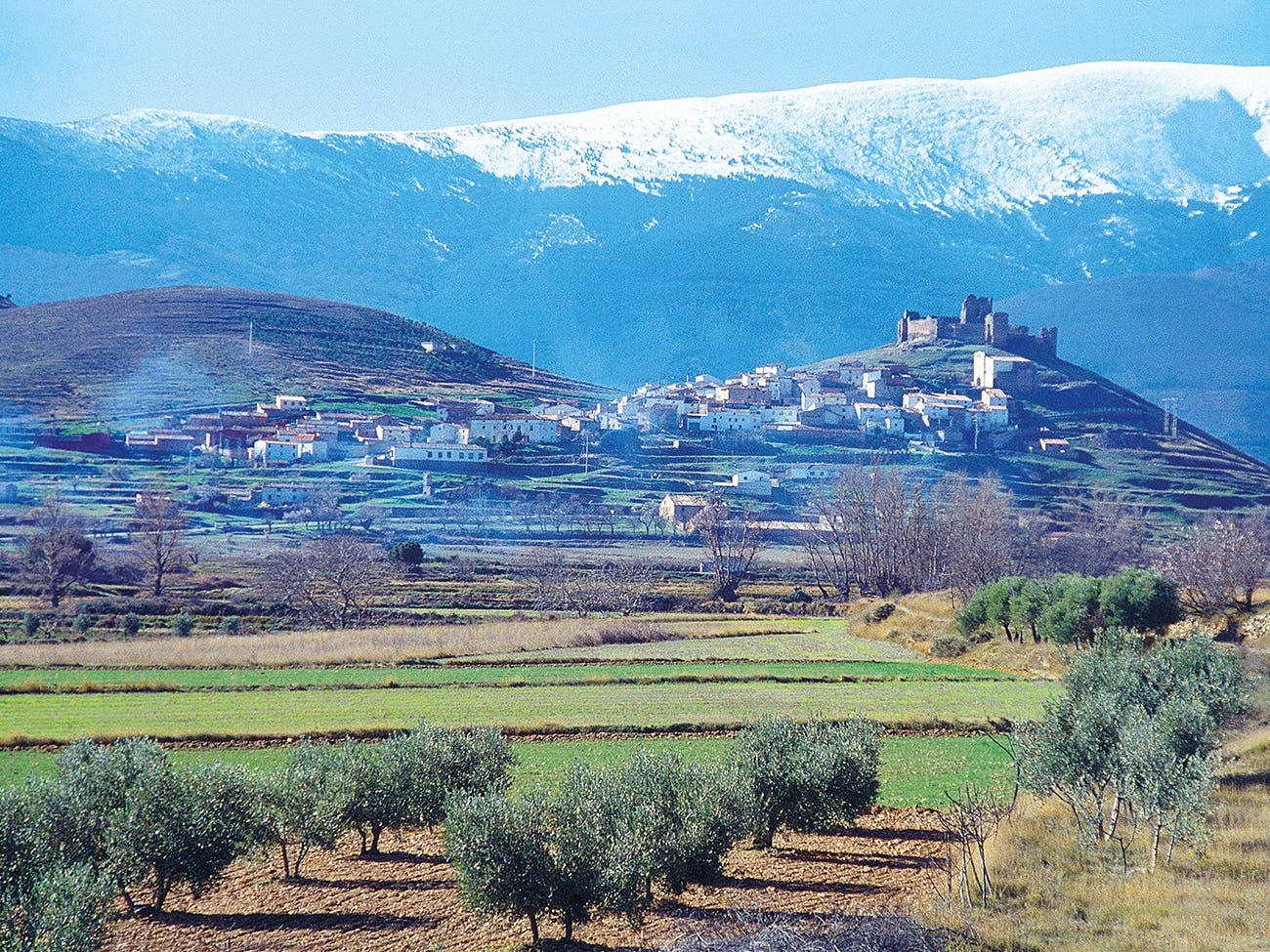

The village of Trasmoz, in Aragon, north of Spain, where wines with the Campo de Borja Denomination of Origin are produced.
Four regions to discover
Though Spain is well known for Rioja, Ribera del Duero and Cava, its treasures are often buried in unknown regions. Here are four of them, with a word from José Peñín on what makes them so special.
Campo de Borja “The region focuses mainly on Garnacha Tinta (Grenache Noir). Local vineyards are found at differing altitudes. Defined by the Moncayo massif, wine here springs from low-altitude clay soils as well as sandier terroirs at higher heights.”
Yecla “The region features reds derived from the Monastrell (Mourvèdre) varietal, which is even lighter than those in the neighbouring region of Jumilla. This designation was established decades ago to promote bulk exports. Today, thanks to quality vintners, Yecla has moved beyond its historical image as a quick-and-easy wine region.”
Almansa “Almansa is gifted with the virtues of altitude and late-ripening varietals like Garnacha Tintorera (Alicante Bouschet). The result: wines which express their varietals uniquely, full-bodied but with red-fruit notes.”
Cariñena “A region with wines that are lighter than those produced in Campo de Borja. Grenache is dominant here, but at substantially lower prices.”
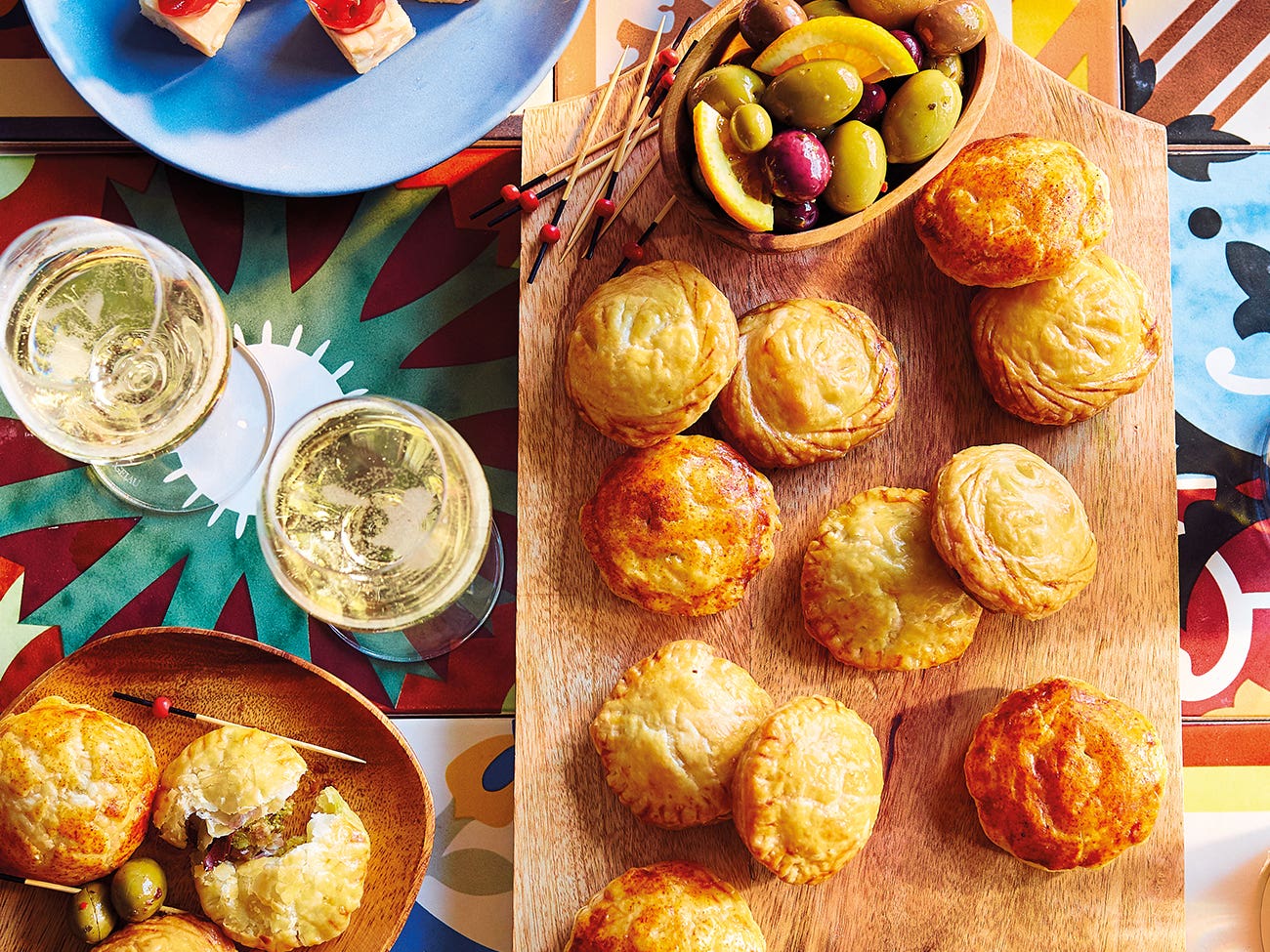

Mini manchego and serrano ham puff pastries
Preparation: 20 minutes
Cooking: 20 minutes
Cost per serving: about $1.00 per puff
Makes 12 puff pastries
Ingredients
- 1 400-g (14-oz) package puff pastry
- 4 slices Serrano ham (or prosciutto), cut into julienne
- 30 mL (2 tbsp) pesto (homemade or store-bought)
- 60 mL (1/4 cup) Manchego cheese, shaved
- Freshly ground black pepper
- 1 egg, beaten with a little cold water
Preparation
1. Preheat oven to 190°C (375°F). 2. Roll out half the puff pastry, about 3 mm (1/8 in) thick. 3. Using a 5 cm (2 in) cookie cutter, make 12 disks of dough. 4. In a bowl, mix together the ham and pesto. Stir well. 5. Divide and spread the mixture on each disk, leaving the edges free to seal later on. 6. Add the cheese in the same manner. Season with pepper. 7. Roll out the other half of the dough and cut out another 12 disks. 8. Using your finger, moisten the edges of the garnished disks with egg wash. 9. Top with one dough disk and seal with your fingers. 10. Repeat the same steps with all the other disks. 11. Brush the puff pastries with the remaining egg wash. 12. Place puffs on a baking sheet and cook in the oven for 15 minutes. 13. Turn off heat, open oven door partly and allow the pastries to finish cooking, approximately 5 more minutes.
What to drink with these Mini Manchego and Serrano ham puff pastries?
Sparkling wine with ham and cheese bites, anyone? Yes please! Especially with the hints of lemon, pear, almond and melon of Villa Conchi, which will make a tasty pairing with manchego and serrano. Annually, Spain sells somewhere near 250 million bottles of Villa Conchi, a sparkling wine produced with traditional methods and an impressive value for your dollar. Made mostly in Catalonia, though it can come from anywhere in the country, it boasts distinctive character thanks to the typical grapes that are used to make it: mainly Macabeo and Parellada and Xarello for white, and Trepat for rosé.
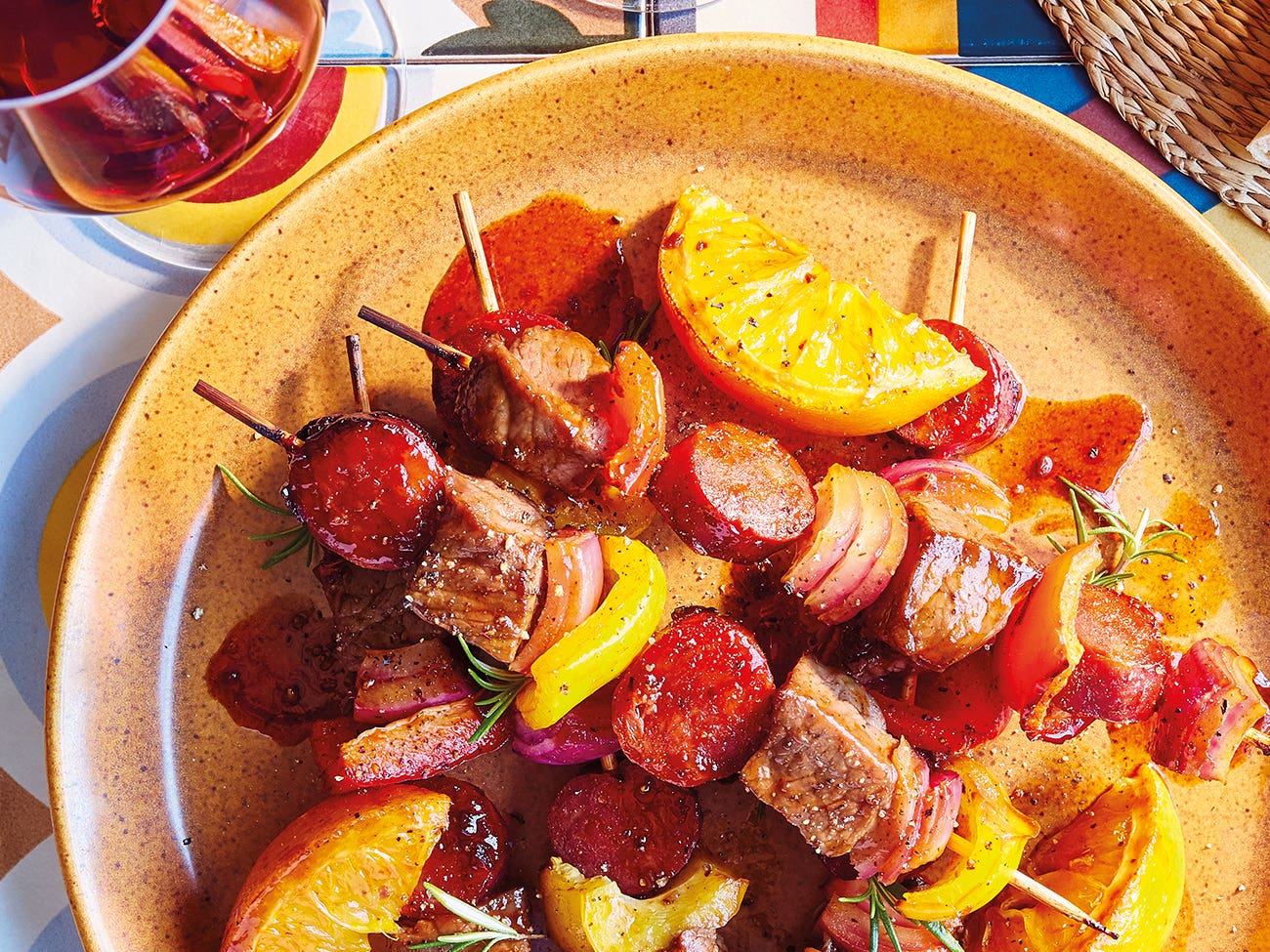

Beef tenderloin and chorizo brochettes with plum and coriander
Preparation: 12 minutes
Cooking: 10 minutes
Cost per serving: about $5.00
4 servings (12 brochettes)
Ingredients
- 10 mL (2 tsp) vegetable oil
- 1 French shallot, chopped
- 1 clove garlic, chopped
- 10 mL (2 tsp) ground coriander seeds
- 160 mL (2/3 cup) red wine
- 250 mL (1 cup) plum sauce
- Bamboo skewers
- 500 g (1 lb) large beef tenderloin cubes (24 total)
- 200 g (7 oz) chorizo, cut into 1 cm (1/2 in) slices
- 1 small red onion, cut into cubes
- 1 red bell pepper, cut into cubes
- 1 yellow bell pepper, cut into cubes
Preparation
1. In a small saucepan, heat the oil over medium and sauté the shallot, garlic and coriander for 1 minute. 2. Add the wine and let simmer for 1 minute. 3. Add the plum sauce, mix well and remove from heat. Let cool. 4. Soak the bamboo skewers in water for 15 minutes. 5. Prepare the brochettes by alternating beef, chorizo, onion and bell pepper. 6. Place the brochettes on a large plate. 7. Brush with a bit of the sauce prepared in steps 1 to 3 and refrigerate for 20 minutes. 8. Preheat barbecue (or a skillet) to high. 9. Place the brochettes on the hot barbecue and reduce heat to medium. 10. Grill for 7 or 8 minutes, or until desire doneness. 11. Turn and brush the brochettes with the sauce several times while cooking. 12. Serve immediately.
Presentation suggestion: rosemary (or other fresh herbs) and orange slices.
What to drink with beef tenderloin and chorizo brochettes with plum and coriander?
The assertive character of Spanish reds are the perfect pairing for robust and spicy recipes, like these beef brochettes elevated with coriander and chorizo flavoured with pimentón, a savoury smoked Spanish paprika. The red meat and spices are especially complimentary to the tannins and elegant fruitiness of a Rioja like Campo Viejo. Plum is a savvy response to the mature flavours of Monastrell, think Hécula or Laya. These brochettes would be just as delicious with Borsao Selección and Monasterio de Las Vinas Gran Reserva.
Related Posts
-
Read more
SAQ shelves are lined with more than 300 wines and spirits produced abroad and bottled here, a process that has a positive impact on the environment and workforce in the province.
-
Read more
In recent years, Prosecco DOC (Denominazione Di Origine Controllata) sales have dizzying new heights. Read on to learn more about the accessible bubbles adored the world over.
-
Read more
Bubbly’s rising popularity has resulted in a wide variety of bottles to choose from. Here’s a handy guide to finding the one that’s right for you!
 Access to SAQ Inspire personalized services and store inventories are unavailable at the moment.
Access to SAQ Inspire personalized services and store inventories are unavailable at the moment. Free in-store delivery with purchases of $75+ in an estimated 3 to 5 business days.
Free in-store delivery with purchases of $75+ in an estimated 3 to 5 business days. 
